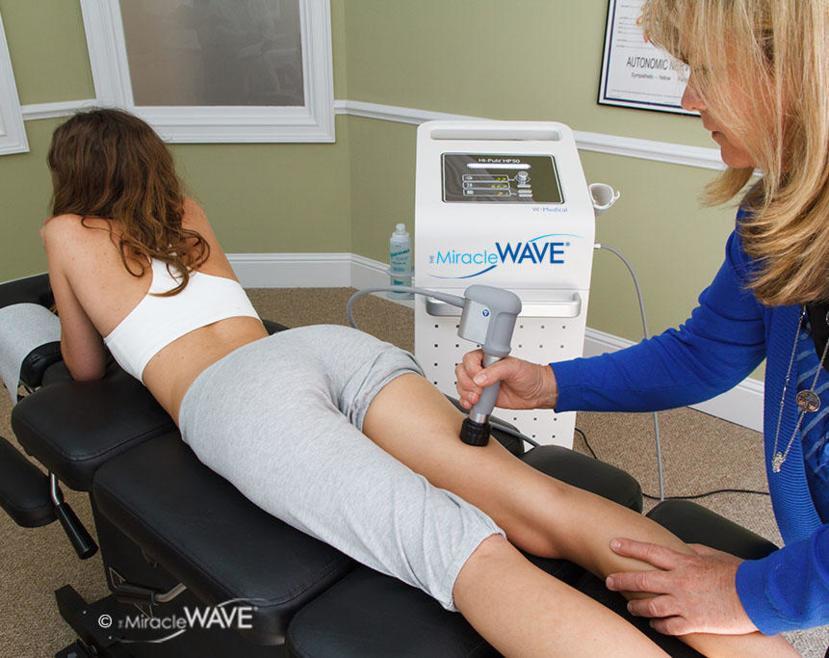Acoustic Wave Therapy a Game Changer for Acute and Chronic Tendon and Muscle Injuries

Dr. Michael Maiorino is a Chiropractor practicing in Alpharetta, GA. Dr. Maiorino specializes in preventing, diagnosing, and treating conditions associated with the neuromusculoskeletal system, while improving each patients functionality and quality of life. Conditions treated include sciatica, neck pain, and arthritis... more
What is acoustic wave therapy? Acoustic wave therapy is a physiotherapy modality that uses pressure waves to promote healing. The pressure wave is generated by compressing air and accelerating a projectile against a metal or ceramic plate (depending on the penetration depth needed). The wave that is generated passes through the tissue of the body to a depth up 60mm (2.3 inches) reaching the muscles tendons and ligaments. Unlike focused shock waves the acoustic waves immediately start to diverge through a larger tissue area and lose energy as it passes through. This divergence of the wave enables a larger treatment area. Secondly, because the wave loses energy, there is much less discomfort (or no discomfort at all) when the wave passes through the tissues.
Common indications for using acoustic wave therapy:
- Achillodynia: pain due to inflammation of the Achilles tendon or the bursa associated with it.
- Plantar fasciitis
- Metataralgia: pain behind the toes of the feet
- Tibal stress syndrome: shin splints
- Patellar tendonitis: inflammation of the tendon that connects your kneecap (patella) to your shinbone (tibia)
- Trochanteric tendinopathy: inflammation of tendons around the hip (the top of the thigh bone where it attaches to the pelvis)
- Calcific tendinitis: a disorder characterized by deposits of hydroxyapatite (a crystalline calcium phosphate) in any tendon of the body, but most commonly in the tendons of the rotator cuff (shoulder), causing pain and inflammation
- Radial/Ulnar epicondylitis: known commonly as tennis elbow and golfers’ elbow
- Trigger points: is a sensitive area in the muscle or connective tissue (fascia) that becomes painful when compressed. Pressing on a trigger point can cause referred pain and can help identify the external area in the body generating the pain. On the other hand, trigger points can also be a point from which pain radiates throughout the muscle and fascia causing myofascial pain syndromes.
The biological reaction
The waves react with cells that make up the ligaments/muscles/tendons causing an increase in blood circulation through the injured area. The waves create a microtrauma at the cellular level triggering the body to accelerate its natural healing process.
Treatment
A gel is applied to the treatment area to facilitate the wave efficiently through the tissue. Treatment per area lasts about 10 -15 minutes delivering anywhere from 500-4000 pulses. Treatment is usually done every 5-7 days for approximately 5-8 weeks. The duration will vary depending on chronicity and severity of the injured tissue. Most patients feel some relief after the first session.









